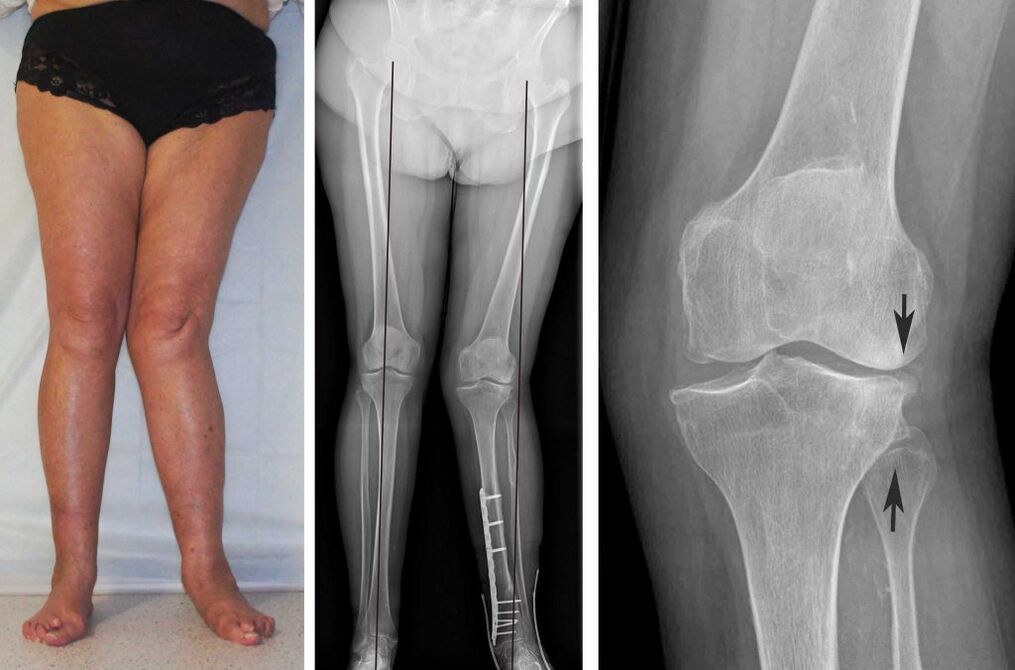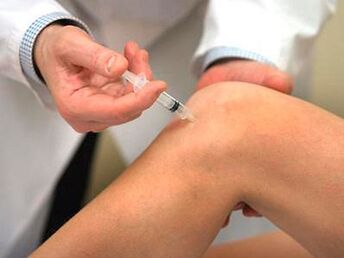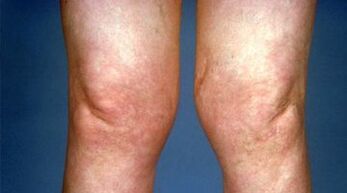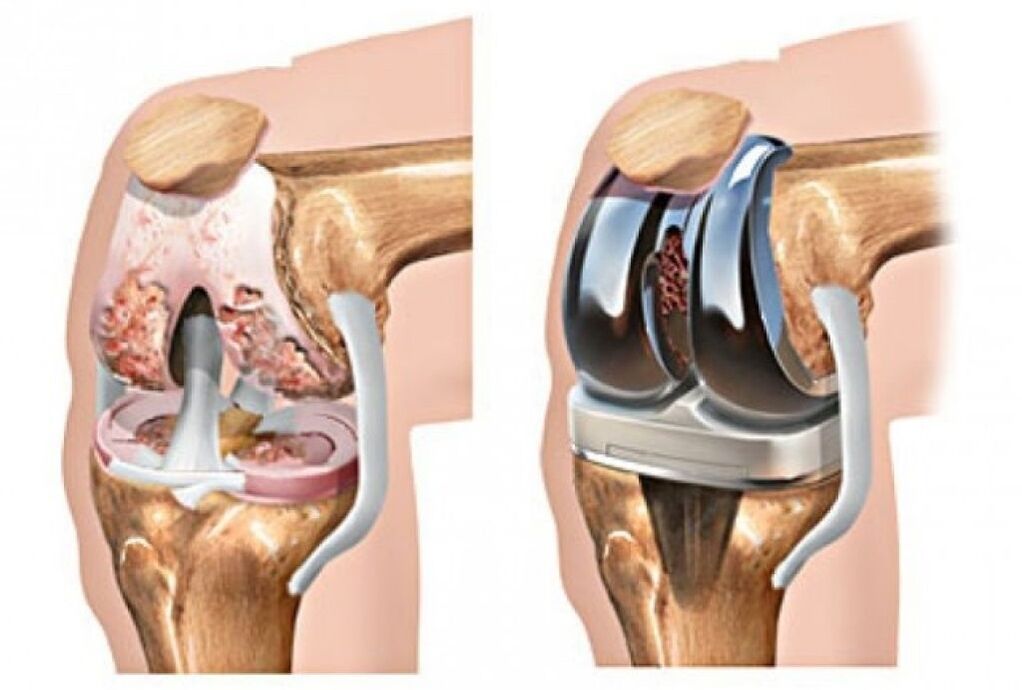Osteoarthritis of the knee is progressive. With the development of the disease, cartilage is first affected, then bone elements participate in the destruction process. Excessive physical activity, sedentary, metabolic disorders lead to the causes of problems.
When the disease develops, there is a risk of causing ankylosing spondylitis, accompanied by a decrease in joint mobility.
Features of the disease

Knee osteoarthritis is accompanied by deformation and destruction of cartilage. The disease is characterized by chronic degeneration and causes pain of varying degrees.
It causes complete loss of motor activity and loss of function. According to ICD-10, the disease is coded as follows: M17. Gonarthrosis (arthritis of the knee joint).
Women are more susceptible to diseases than men. At the same time, the risk of joint disease is much higher in people with varicose veins and overweight. That's why it's more common in obese women over 40. The elderly are also affected. In young people, joint disease develops as a result of trauma that occurs during physical work or sports activities.
Arthritis should be differentiated from arthritis, which is an inflammatory disease caused by a disorder of the immune system. Infectious diseases also lead to the development of arthritis.
In the photo, the clinical picture of joint disease

stage
Knee osteoarthritis has 2 main forms - primary and secondary. In the first case, the disease appears in childhood and is caused by a violation of the development of the surfaces of joints or ligaments.
In this situation, the joint faces increased loads, leading to degenerative changes. The secondary form of osteoarthritis is associated with injury and other diseases.
Pathology can be unilateral or bilateral. In the first case, the cause of the disease is usually trauma. The bilateral form of the pathology is often the result of obesity.
There are several stages in the development of osteoarthritis of the knee joint. The earlier the disease is detected, the easier it is to treat.
The main stages of the disease include:
- 1 degree- At this stage, people rarely go to the doctor. They feel slight discomfort in the right or left knee, appearing after a long walk. Pain syndrome occurs only after greater exertion or with vigorous flexion and extension of the knee. When performing an X-ray, it is possible to see a slight narrowing of the joint space and the appearance of bony processes in the structure of the joint. Pathology was discovered incidentally during other examinations. At this stage, conservative treatment is enough.
- 2 degrees- characterized by more obvious symptoms of the disease, which are difficult to ignore. Constant knee pain. It is especially strong in the morning and evening. Even in a calm state, the unpleasant feeling does not go away. A person's gait slows down, motor activity is disturbed, movement in the knee is accompanied by a crunching sound. There is a risk of complications with bone or cartilage fragments entering the joint cavity. This increases pain and loss of motor activity. When palpating the knee, there is a risk of severe pain and visible joint deformity. Often inflammatory processes develop. In such a situation, the knee swells. When conducting x-rays, you can see that the joint cavity is sharply narrowed, the appearance of bone sockets, curved bones. In such a situation, the patient needs complex treatment. In some cases, it can't be done without surgery.
- 3 degrees- represents a form of neglected pathology. At this stage, a person receives permanent disability. Patients with constant pain in the knee joint, reduced mobility. With any movement, the knee will crack. The joint is characterized by a pronounced deformity, it increases in size due to fluid accumulation and almost complete loss of mobility. When conducting X-rays, it is possible to see the destruction of the ligament and meniscus apparatus, cartilage abrasion, and an increase in the size of the connective tissues. Partial fusion of joints can also be observed. To solve the problem, the affected joint is changed to an artificial joint.
In most cases, patients come to see a doctor in the second stage of joint disease. This is typical for older people, who are used to age-related changes.
Causes of knee osteoarthritis

The main cause of knee osteoarthritis is trauma. Damage can be caused by exercise, arthritis, or other factors.
The main causes of knee osteoarthritis include:
- Factors that cause knee arthritis can be arthritis, bursitis, and others.
- Damage to the meniscus - in the absence of treatment of such a pathology, joint disease often develops.
- Osteoarthritis of the knee.
- Physical factors - difficult sports, overweight, etc. v.
- Fracture, post-traumatic syndrome.
- Surgery for meniscal lesions, arthroscopy, prolonged blockade using hormones.
- Diseases that alter the load in the knee. These include flat feet, lower back injuries, and rheumatism. Also in this category is hip dysplasia.
Symptoms and signs
The main symptoms of the disease include:
- Pain - usually mechanical discomfort, relieved by analgesics. It can be dull, aching, sharp.
- Twist while moving.
- Decreased joint mobility.
- Reduce physical activity.
- Weakness of the muscles of the extremities.
- Local increase in temperature in the knee area.
- Disturbance of gait, accompanied by limping of the legs.
- Violation of stability.
- Knee jam.
Diagnose

Before proceeding with the treatment of genital warts, it is necessary to undergo a thorough examination.
If gonarthrosis is suspected, you should contact an orthopedic surgeon. The specialist examines and interviews the patient, assessing the condition of the joint and the range of motion of the joint.
To determine the pathology, conduct the following studies:
- Magnetic resonance imaging. With the help of the procedure, it is possible to study the affected area by obtaining a three-dimensional image. Manipulation shows blood vessels and nerve fibers.
- X-ray. This procedure allows you to identify cracks, depressions, bone processes.
What is dangerous knee osteoarthritis?
Consequences of joint disease include arthritis, atrophy of muscle and ligament tissues, and gait disturbances. There is also a risk of lower extremity deformity.
In difficult situations, the disease causes complete degeneration of cartilage and deformation of bone structures. As a result, the mobility of the limbs decreases, the patient becomes disabled.

Prevention and prognosis
To avoid the occurrence of knee arthritis, you must adhere to the following recommendations:
- eat right - the menu needs to add more vitamins, minerals, protein;
- give up bad habits;
- normalize weight;
- go to sports, walk or ride an exercise bike, perform medical complexes;
- Avoid injury, protect your feet with knee pads.
Pathology is beneficial for therapy, since thin cartilage tissue is observed only in the third stage. The prognosis is quite favorable.
If therapy is not started on time, there is a risk of disability. Usually the group is assigned with the third degree of gonarthrosis. For military service, they are exempted from developing a disfiguring form of the disease.
Osteoarthritis of the knee is a dangerous disease, leading to negative consequences for health. To deal with the problem, you need to consult a doctor in a timely manner. The specialist will conduct the necessary research and select the appropriate therapy.
























